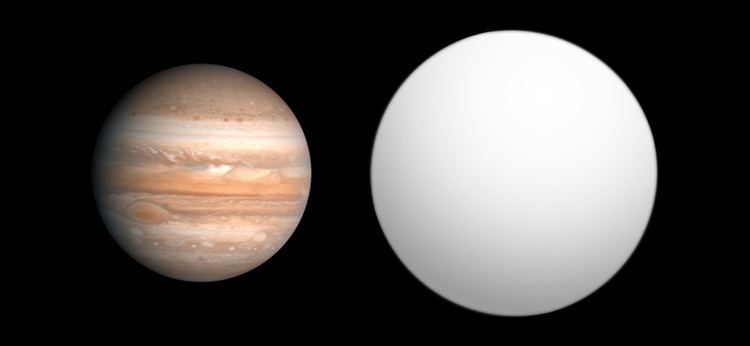Discovery date December 10, 2009 | Discovery status Published | |
 | ||
Discoverer(s) Hebb et al. (SuperWASP) Other detection methods Radial velocity,Secondary transit | ||
WASP-19b is an extrasolar planet, notable for possessing one of the shortest orbital periods of any known planetary body: 0.7888399 days or approximately 18.932 hours. It has a mass close to that of Jupiter (1.15 Jupiter masses), but by comparison has a much larger radius (1.31 times that of Jupiter, or 0.13 Solar radii); making it nearly the size of a low-mass star. It orbits the star WASP-19 in the Vela constellation. It is currently the shortest period hot Jupiter discovered as planets with shorter orbital periods have a rocky, metallic or degenerate matter composition.
In 2013, secondary eclipse and orbital phases were barely observed from the data gathered with ASTEP telescope, making it the first detection of such kind through ground-based observations. This was possible due to large size of the planet and its small semi-major axis.
On 3 December 2013, scientists working with the Hubble Space Telescope reported detecting water in the atmosphere of the exoplanet.
